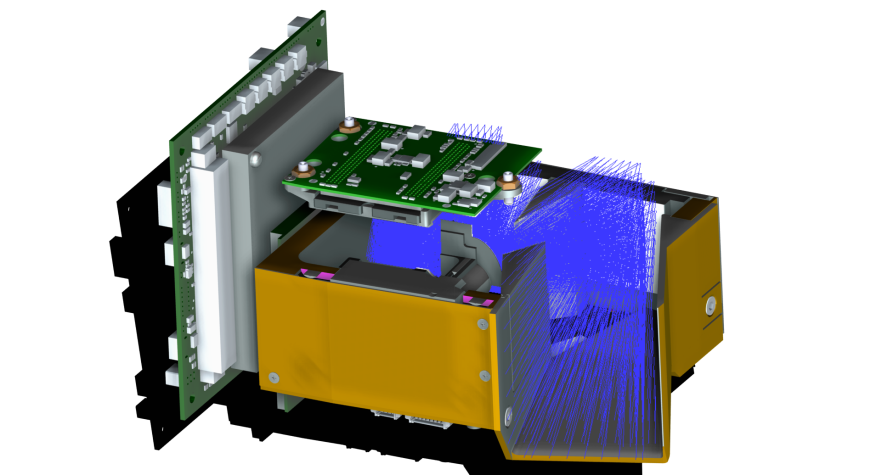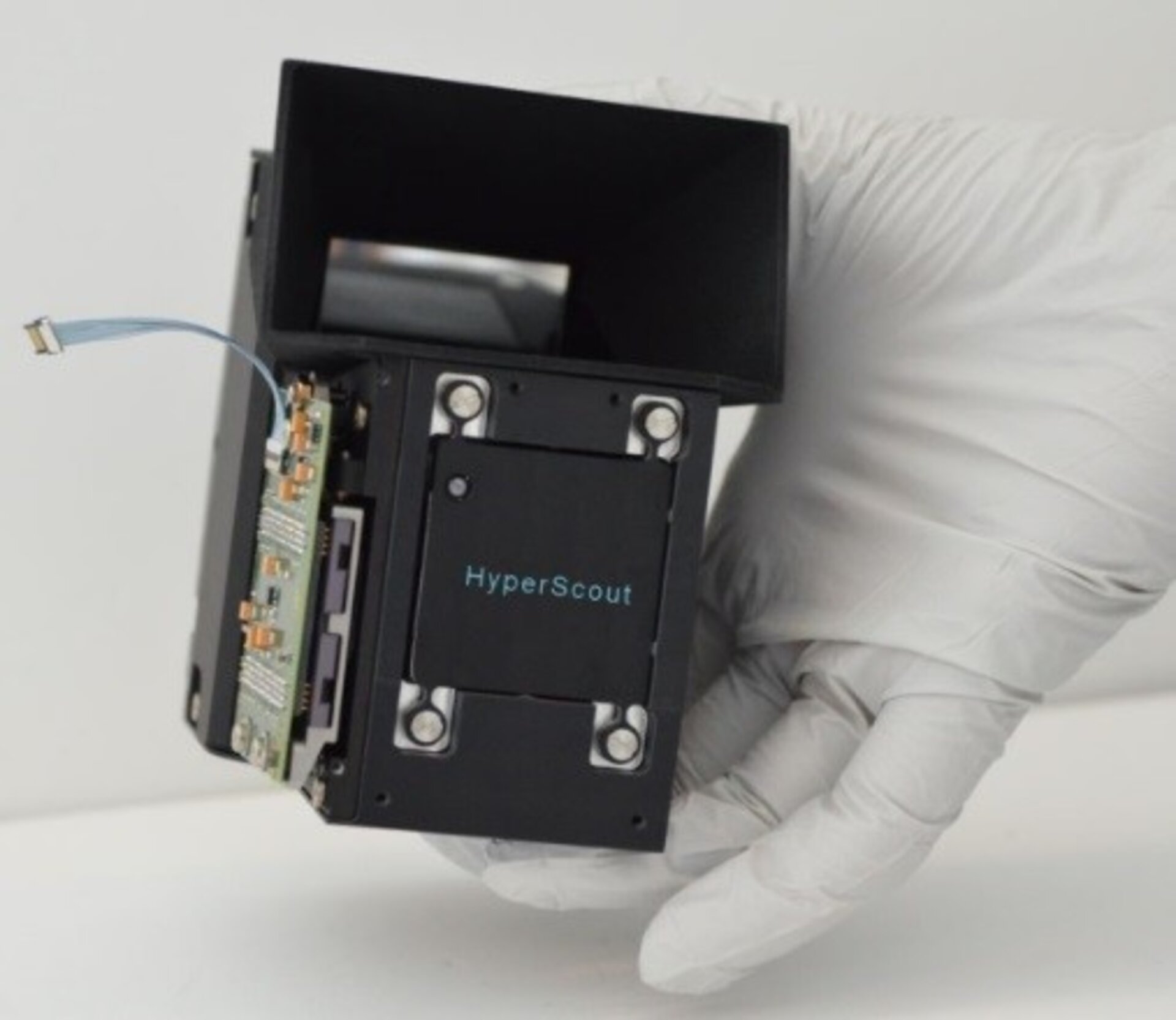HyperScout® (former Hypercube)
| Programme: | GSTP | Achieved TRL: | 4 |
| Reference: | G511-040MM | Closure: | 2016 |
| Contractor(s): | Cosine Research (NL), Science and Technology (NO), VITO (BE) | ||
Recent developments in optical fabrication, detector technologies and spectral filter allow very compact telescopes and spectrometers designs, although less performing than large ones. The combination with clever algorithms for spectral analysis of Earth scenes opens the possibility to develop innovative compact instruments that overcome data downlink limitations for nanosats and target new applications, such as early warning, change detection of land cover and land usage.
Objectives
- Design, manufacture and test an Engineering Model of a miniaturised hyperspectral instrument
- Identify applications and develop corresponding innovative algorithms for on-board hyperspectral data handling for real-time L2 image processing

Achievements
The testing of the manufactured engineering model HyperScout® (formerly HyperCube) proved good performance. The algorithms were produced for a variety of selected applications (water and vegetation monitoring, fire and flood detection, land cover and land use change detection). The on-board processing capability allows the system to generate data products with quasi-real time information.
Benefits
This miniaturized system is a small, cost-effective and reconfigurable payload. It can be used in a large variety of missions: from large-scale, as support instrument to larger ones, to small scale, giving commercially valuable data products.
Next steps
GSTP In-Orbit-Demonstration started in Q3 2016 to improve HyperScout performance and perform functionality tests in orbit. A PFM of HyperScout has already been built and integrated into the 6-U GOMX-4b platform. Launch is planned in August 2017.





